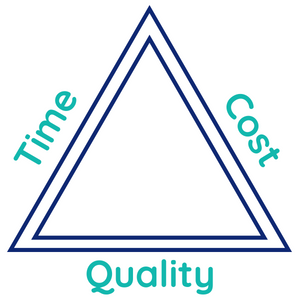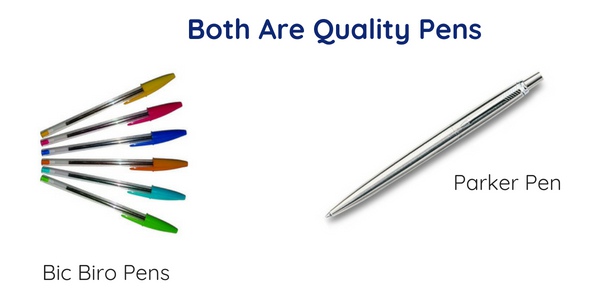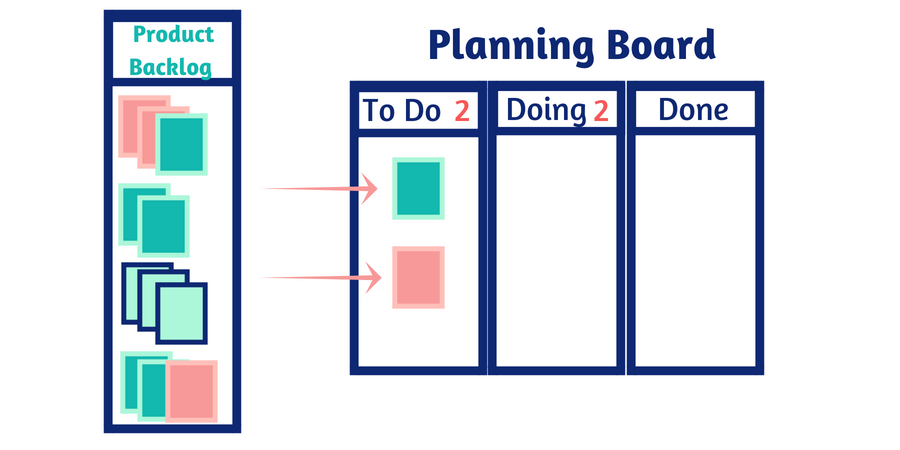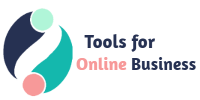At this stop, you will find resources to help you plan your information product.
Time to populate your Planning Board and create your checklists to ensure information product creation success.
A Profitable Information Business Owner plans proactively, sources resources and organises activities efficiently and effectively to increase the probability of online business success.
In the first stage of your online business journey, you stopped off at the first three steps to identify your niche market ('playing field'), identify your product offering and select the product medium / format that best suits your ideal customer and fits with your capability to produce a quality product.
In this the second stage of your online business journey our focus is on the essential elements to success - solid planning and organisation.
You have successfully built your planning framework and worked through the essential preparation activities at the previous stops. Now that you have built a solid planning framework its time to dive deeper to plan your information product. You will identify the work items needed to populate your planning board with. You will also establish the essential checklists that you will refer to throughout the product creation process.
Once you have completed the activities at this stop along of your journey you will have:
- defined the work items required to meet your goal
- identified broadly the resources needed to implement the work items
- determined what 'ready' to start looks like - Definition of Ready
- established the acceptance criteria to determine when your product is 'done' - Definition of Done
- populated your Planning Board
- established what needs to be done to create your information product
So let's get to it!
Balancing Time, Cost and Quality
Planning and organisation are key elements of any endeavour and creating your digital information product are no different. Creating a quality product that your customers will be eager to purchase and equally eager to promote, relies on ensuring that the output you create is 'fit for purpose' and produced to a high standard.


Creating a quality product comes at a cost in terms of time and money. To plan your information product the key is to find the balance between the project attributes of time, cost and quality.
Time
Spending too much time on product creation means you are delaying getting your product to market. You may have identified a gap within your niche that isn't currently being met. You need to be aware that your competitors are also scanning the market landscape looking for product creation opportunities. Take an excessive amount of time to create and perfect your product, you may find that gap has been closed by your competitor who then has the 'first-mover advantage'.
Cost
You select resources hopefully based on a project budget. Investing in a sledgehammer to crack a nut when a low-cost hammer will do, will impact on your return on investment. That means that you may have to sell more products or review the price of the product in order to recoup the higher cost of creating the product. Throwing money at reducing product creation time will have diminishing returns.
Quality
Quality is also about 'grade'. Just because a product is cheap doesn't mean it is not good quality nor does high-cost guarantee good quality. Think of the humble Bic ballpoint pen. We use them every day. They do a good job of transferring ink to paper to capture our words of wisdom. A ballpoint pen is 'fit for purpose', it does what it is supposed to. It is a quality product provided it doesn't leak and functions as specified with ease.


Now take a fancy Parker ballpoint pen. It fundamentally does the same thing as a Bic ballpoint pen. The difference is in the 'grade', the addition of style and the materials used in the construction of the pen. Both, however, are quality products, they simply target a different market and sell at different price points.
Don't let perfect be the enemy of done
When you plan your information product you are not aiming for perfection here. It is a process of continuous improvement where we gather feedback from our customers to make our product better and more relevant to our customer community over time. However, it does need to meet a minimum standard to be considered 'done'. This is where the 'Definition of Done' comes in.
Continuous improvement and review activities are essential to maintaining quality as well as ensuring that any information product you create remains relevant and 'top of mind' within your identified niche.
"A goal without a plan is just a wish"
Larry Elder
Planning for Entrepreneurs
Whether you are a solopreneur (the creator and manager of all things), you outsource specific tasks only or have a team to support your business, planning and visibility of project tasks is essential. In terms of applying the Scrumban planning methodology, the main differences are team meetings, the level of collaboration and the level of work item details.
As a solopreneur, you don't need to conduct the daily meetings and you can leave out the overheads associated with managing teams. When you are writing the work item details you are writing for yourself. As long as you have enough information to pick the work item up and run with it at any time then you are good to go.
However, if you have chosen to outsource some work items you will need to regularly monitor progress and liaise with those individuals or companies who are undertaking work for you. If you have a team working with you, then having the regular meetings to keep abreast of progress, manage blockages and convey product / project decisions is important.
As the 'creator and manager of all things,' you will be the one who
- decides what work items will be placed in the product backlog
- decides what features will be included to meet the product creation goal
- decides which priority items are to be brought into the 'to do' step
- accepts when each work item is 'done'
- coordinates with external resources
- facilitates the movement of work items from one process step to another
- develops the product
Plus a whole lot more.
Stage 6 - Plan Your Information Product Creation
You have already set up your Planning Framework so now it is time to build on that solid foundation. The next steps within this stop, to plan your information product, you will need you to:
- identify the work items that require completion to create the information product
- define your Definition of Ready
- define your product acceptance criteria in the form of the Definition of Done
- populate your Planning Board with the identified work items
- review your checklists and Planning Board
Establish Work to be Completed
You defined your product goal when you went through the stop to identify your product offering. You also identified which medium and format you will use to create your product offering. Now that you know what you want to achieve, it is time to work out how to achieve it.
For the purposes of this exercise, we will assume that you are starting your Planning Board with a clean slate with no current work in process. Our first step is to identify all the 'stuff' we need to do. To make the best-informed decisions we need a clear view of our work. If we can see it, we can manage it.
We are going to grab this monster by the tail so it doesn't slip under the bed and keep us awake at night. Unknown tasks can't be managed. They only serve to increase our anxieties and add to our sense of being overwhelmed. But this is all avoidable.
To plan your information product start by grabbing a pile of sticky notes. Note each task big and small down onto a separate sticky note. Don't worry if you don't know how to complete the task right now, we simply want to capture what needs to be done. Think of it as creating a huge 'to do' list. As a minimum have a clear title representing the work item eg create a table of contents for the ebook. Adding a unique identifier like a number is useful if you want to record further information about the work item that you can't fit on the sticky note (or card).


During this process, you will also identify inter-dependencies. Note these down as you go. If you end up with enough sticky notes to wallpaper your room, don't despair. If your experience is uncomfortable first time around, that's normal. It gets easier over time so stick with it. You have the monster by the tail and you can now see it in all its glory, just remember you are now in control.
As you plan your information product you may want to extend the information you record on the note / card to include dates when the work items enter or exit a stage. The dates are filled in as the card moves between stages. This helps to measure the time it takes to complete specific tasks, which could be useful if you choose to outsource a specific work item eg proofreading or graphic design.
Are you Ready to Start? - Definition of Ready
Before you start creating a product it is important to make sure that you have a clear view of what it is you want to create and have all the resources you need at the ready. This is where the 'Definition of Ready' comes in.


“Ready are you? What know you of ready?”
Yoda - Star Wars, The Empire Strikes Back
Before you populate your Planning Board with the work items you have identified so far, you need to make sure that they are 'ready'.
Think of the Definition of Ready like the checklist you prepare when you are about to travel overseas. Your checklist has all the things you need to check before you leave home. Do you have your passport and is it valid? Do you have your itinerary and are your hotel bookings all confirmed? Do you have all the right clothes for the climate, your toiletries and medication? Having a checklist to make sure you don't miss what you need for your holiday to go smoothly helps to reduce the stress that you haven't forgotten anything important. You can have confidence that you can leave home and start your holiday worry-free.
By defining your 'Definition of Ready' will give you a checklist to verify whether you are ready to start and the work items are workable. You can be confident that you have what you need to get started, without having to stop and waste valuable time to source resources while you are in the middle of development. This step is key, as it helps to save you valuable time and minimise frustration and the sense of overwhelm.
Here is an example of some of the items you are likely to have on your Definition of Ready checklist:
Populate Your Planning Board
Using your Definition of Ready checklist you have ensured that your work items are clear, digestible, valuable, independent and testable. Once you have exhausted the initial list of 'things to do' you can look to group the work into batches, colour code them or combine smaller items into one. It's up to you.


Now it is time to prioritise which work items you will work on first.
Step back from your wall of sticky notes and decide which work items need to be completed first. Sort them in order of priority being mindful of inter-dependencies. Once sorted select a few and place them into the 'To Do' column. If you have set a work in progress (WIP) limit for your 'To Do' column don't exceed it. Put the rest into your Product Backlog ready to be pulled from as you complete the tasks in progress.
Populate Your Product Backlog
By prioritising the Product Backlog items you have effectively ordered them based on their value. The higher the item is to the top of the list the sooner it will be delivered. As the items located at top of the Product Backlog will be delivered sooner, they will also be more detailed and clearer compared to the lower items. This is were 'planning on demand' comes in.
Keep in mind that the Product Backlog is dynamic, it is never complete. It constantly changes as you identify what your product needs for it to be valuable, competitive, and useful. It evolves as the product and the environment in which it will be used evolves. You will add items over time as you receive and incorporate feedback from your customers. You will also identify opportunities for improvement which you will then add to the Product Backlog. Therefore we do not wait until the Product Backlog is complete to start delivering the items.
How do I Know When I'm Done? - Definition of Done
Here you will develop a set of acceptance criteria that provides guidance to determine when the work item is complete and delivered to the desired standard. Defining the 'Definition of Done' is essential to creating quality products.
It provides a valuable 'measuring stick' against which you can verify that all the elements that you planned earlier have been completed. You can then be confident that you haven't left out crucial parts of your information product prior to product launch.
When we bake a cake we test with a thin skewer to check that it is cooked all the way through. We insert it into the centre of the cake and if the skewer comes out clean then it is cooked. We can tell by specific checks that it is 'done' and ready for consumption. The same principle goes for any information products that we create.
'Done' means the feature has been developed, tested and meets the defined acceptance tests. We check the output against our Definition of Done checklist and we then know it is ready for our customers to consume. Nothing has been left out and the product has been delivered to the required quality. When working with teams or an outsource provider having predefined Definition of Done checklists enables us to have a shared understanding of what it means for work to be complete.
Here is an example of some of the items you're likely to have on your Definition of Done checklist for an eBook:
Review Time
Time to pause and take stock that you have all your ducks in a row before you get into full product creation mode.
Have you:
- clearly defined your work items?
- sorted them allowing for inter-dependencies?
- created a Product Backlog list?
- populated your 'To Do' list on your Planning Board?
- completed your 'Definition of Ready' checklist and ticked it off?
- created your 'Definition of Done' checklist so you know when you're complete?
- setup your work environment so it is conducive to uninterrupted work?
